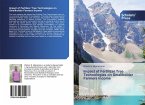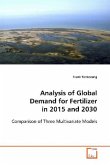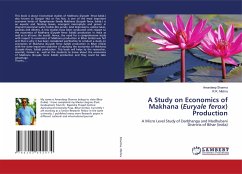Nigerian agriculture is characterized by low productivity. If Nigeria would feed her growing population, the country must increase her food production rapidly. Improved use of inorganic fertilizer has been adjudged as a possible solution to low agricultural output challenge. The study being reported in this book analysed the pattern and determinants of inorganic fertilizer use, and their implications for resource allocation, production cost, farm income, and production efficiency among food crop farmers in Nigeria. The study found that only a quarter (25.6%) of the food crop farmers used fertilizer, at an average of 28kg per farmer per year and 21kg per hectare of land cultivated. The reasons for the low usage and the possible policy interventions to encourage inorganic fertilizer use are provided in this book.
Bitte wählen Sie Ihr Anliegen aus.
Rechnungen
Retourenschein anfordern
Bestellstatus
Storno








